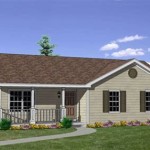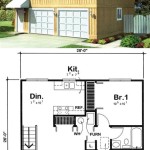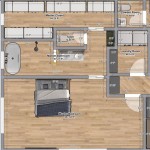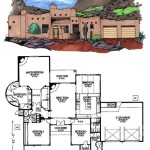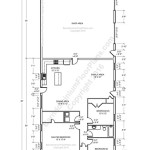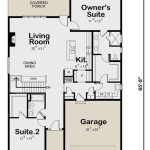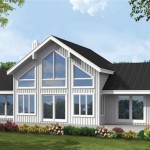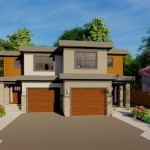Single Family House Floor Plan
A single-family house floor plan refers to the detailed layout of a home designed for one family. It delineates the arrangement of rooms, spaces, and architectural features within the structure.
When designing a single-family house floor plan, architects and designers consider various factors, including the size and shape of the building, the number of bedrooms and bathrooms required, the desired layout of common areas, and the overall aesthetic appeal.
Floor plans serve multiple purposes:
- Construction Documentation: They provide a blueprint for builders and contractors to construct the house according to the architect's specifications.
- Visualization Tool: Floor plans allow homeowners to visualize the layout and flow of their future home before construction begins.
- Renovation Planning: They facilitate remodeling or renovation projects by providing a starting point for design changes.
Common Types of Single Family House Floor Plans
Single-family house floor plans vary widely in design and layout. Some popular types include:
- Ranch-Style House: Single-story homes with an open floor plan, often featuring a connected kitchen, living, and dining area.
- Cape Cod House: Traditionally two-story homes with a symmetrical facade, dormer windows, and a central chimney.
- Colonial House: Symmetrical homes with a central front door, evenly spaced windows, and a pitched roof with dormers.
- Craftsman House: Homes with natural materials, exposed beams, built-in cabinetry, and a cozy, welcoming atmosphere.
- Modern House: Homes with clean lines, large windows, open floor plans, and a focus on energy efficiency.
Key Considerations for Single Family House Floor Plans
When designing or selecting a single-family house floor plan, several key considerations should be taken into account:
- Number of Bedrooms and Bathrooms: Determine the required number of bedrooms and bathrooms based on family size and lifestyle.
- Layout and Flow: Consider the placement of rooms, hallways, and stairs to ensure a logical and efficient flow throughout the house.
- Common Areas: Plan for spacious and well-lit common areas, such as the living room, dining room, and kitchen, to accommodate family activities and entertaining.
- Storage and Closets: Include adequate storage space in each room, including closets, built-ins, and pantries.
- Natural Lighting: Design windows and skylights strategically to maximize natural light in all areas of the house.
- Outdoor Spaces: Consider incorporating outdoor living areas, such as patios, decks, or balconies, to extend living space beyond the walls of the house.
Conclusion
Single-family house floor plans are essential tools for architects, homeowners, and builders alike. They provide a clear and comprehensive representation of the layout and design of a home, guiding the construction process and enabling homeowners to visualize and plan their future living space.

Floor Plan Of A Typical Single Family Detached House Scientific Diagram

Design Ideas For Cost Efficient Single Family Detached Homes Probuilder
Figure A 2 Single Detached House Floor Plans 61 Scientific Diagram

Design Ideas For Cost Efficient Single Family Detached Homes Probuilder

Single Family Small House Plans Floor Photos

Design Ideas For Cost Efficient Single Family Detached Homes Probuilder

Floor Plans Of The Single Family House Scientific Diagram

Top 10 Duplex Plans That Look Like Single Family Homes Houseplans Blog Com

Floor Plan The Madison Apartment House Single Family Detached Home Angle Text Rectangle Png Pngwing

Floor Plans For The Single Family Two Y Housing Prototype Scientific Diagram

